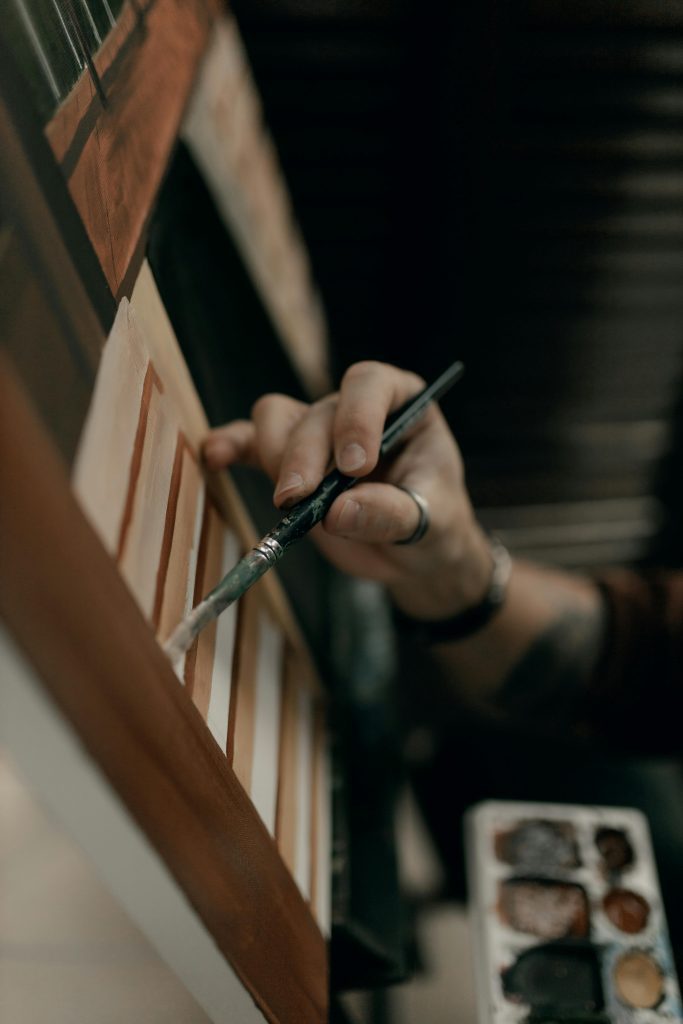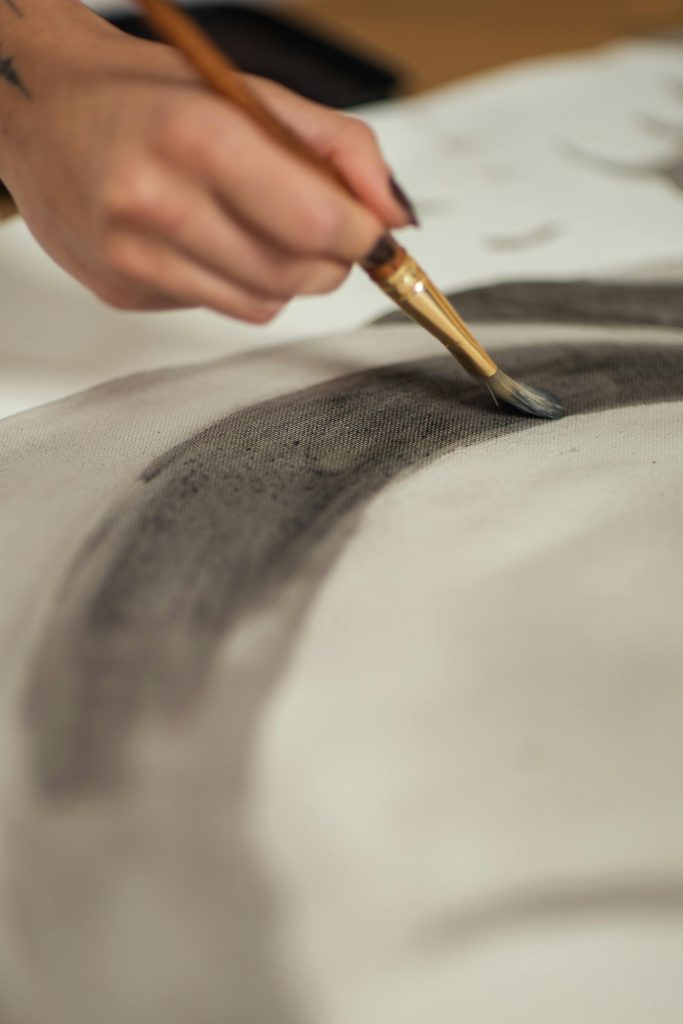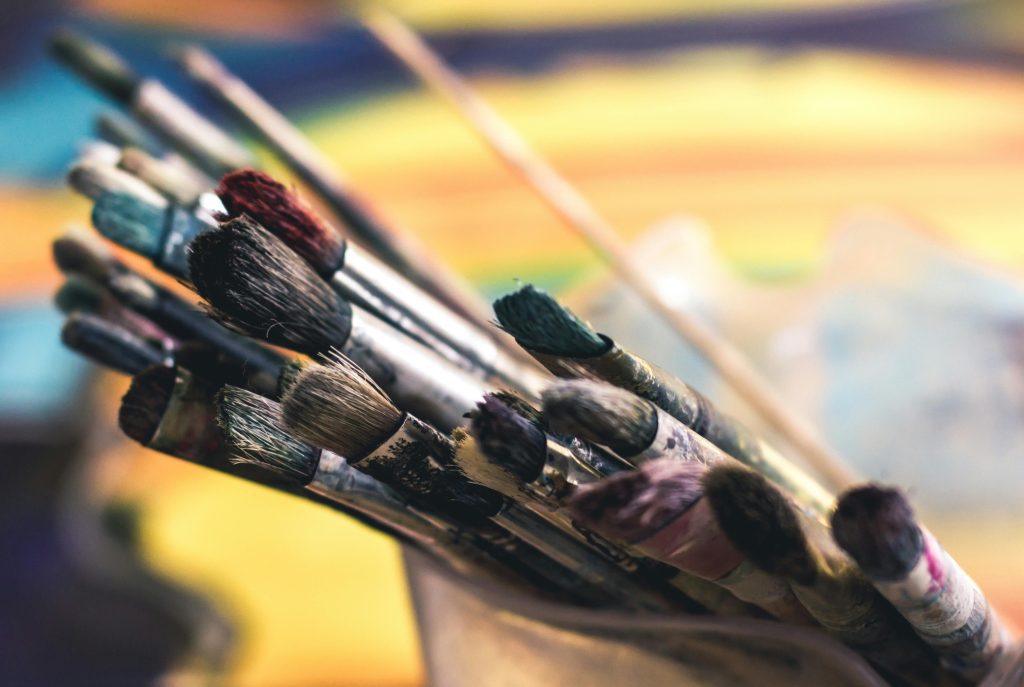How to Show Your Unique Style as an Artist

Why Your Artistic Style Deserves the Spotlight
Your artistic style is more than just the colors you love or the brushstrokes you lean toward. It’s the sum of your experiences, emotions, influences, and the stories only you can tell. In a world filled with art fairs, online portfolios, and endless social media scrolls, your unique style is what sets you apart. And yes, even if you’re still exploring and growing, that evolving essence deserves to shine.
It’s easy to feel like your work might get swallowed in the flood of trending aesthetics or Instagram-ready artworks. But the truth is, collectors, curators, and creative collaborators are all drawn to work that feels authentic and deeply personal. Think of your style as a fingerprint. No one else has yours, and the more clearly you own it, the more visible it becomes in the wider art landscape.
Many artists worry that their voice isn’t “loud” enough to cut through the noise. But volume isn’t the secret sauce here. It’s clarity. The more comfortable you get with your voice, the clearer it becomes, and the more confidently it resonates. Don’t chase trends that don’t fit. Instead, understand the shape of your work and nurture it like a plant in the right sunlight.
Remember that even the most recognizable styles took time to evolve. They weren’t born overnight. Behind every “breakthrough” artist is a portfolio full of trial, error, experimentation, and plenty of unseen sketches. That journey is what molds your voice into something unmistakable.
Let yourself grow through practice, not perfection. The only wrong move is hiding your work because you think it isn’t “ready.” Show your process, your shifts, your growth. These parts of your journey are not distractions, but clues to your emerging signature.
Trust What Keeps You Different
Sometimes the details you doubt the most are the ones others will love you for. Maybe it’s your bold use of neon, your obsession with tiny surreal elements, or how your subjects always seem to float rather than stand. Those quirks are gold. They are what make your work yours.
When you try to strip away your quirks in favor of fitting into what’s “in” right now, you risk blending in rather than standing out. If everyone starts painting soft pastels with botanical themes, a gritty charcoal portrait with haunting lines becomes a beacon. It doesn’t have to be loud or flashy. It just has to be unapologetically yours.
Think about the last artwork that really stopped you mid-scroll or made you lean in at a gallery. Chances are, it wasn’t because it looked like something you’d seen before. It stood out because it felt fresh or raw or just unmistakably individual. That’s the same effect your work can have when you trust your own hand.
Artists who have longevity often credit their success to being consistent with their voice, not necessarily their technique. They allow themselves to grow without discarding what makes them recognizable. In fact, leaning into those oddities is often what leads to unexpected breakthroughs and new audiences.
If your work makes you feel slightly vulnerable or unsure, that’s usually a good sign. It means it’s personal. And personal work is powerful work. The things that make you hesitate before pressing “post” are usually the exact things that deserve to be shared.
Document Your Style Like a Story, Not a Showreel
Let’s face it, the pressure to package your portfolio like a sleek, polished showroom is real. But showcasing your style doesn’t mean only showing the “greatest hits.” Your journey matters just as much. Think of your portfolio as a visual storybook, not a corporate résumé.
Your earliest works, your experiments, even your so-called mistakes all tell us something about your creative evolution. Instead of deleting them from your archive, consider placing them in a section like “Process” or “Early Work.” These glimpses into your growth can be incredibly inspiring for curators and collectors alike.
When organizing your work, group it not just by medium or date, but by feeling, theme, or phase. Maybe you had a “liminal spaces” chapter or a “found materials” season. These categories help people experience your world, not just scan your output.
Use your captions or descriptions to share why a piece matters to you. What were you thinking about when you made it? Was it inspired by a dream, a memory, a color that wouldn’t leave you alone? This adds richness, depth, and real personality to your style presentation.
If you’re applying to open calls or showcasing your work on platforms like Arts to Hearts, make sure your portfolio gives a sense of who you are, not just what you can do. Include a short artist statement that feels honest. Don’t just write what sounds good. Write what feels true.
You’re not selling a product. You’re sharing a perspective. And the best way to do that is by telling your story in a way only you can.

Don’t Just Be Seen, Be Understood
Visibility is only one part of the puzzle. It’s easy to get caught up in the numbers: likes, views, shares. But building a truly sustainable and standout art presence is about connection, not just attention.
To be understood, you have to give people something to hold onto. What themes do you explore again and again? What emotions keep surfacing in your work? What mediums do you return to like a favorite song? These aren’t just artistic choices, they are the scaffolding of your unique style.
When your work is consistent in voice, it becomes easier for others to recognize it, remember it, and want to return to it. You can explore new ideas without losing your core. Think of it like a musician experimenting with new sounds while still being recognizable by their voice.
Being understood also means communicating with your audience. That doesn’t always have to happen through your art alone. Talk about your process in captions, artist talks, newsletters, or studio visits. Let people in on your why.
The more you share your “why,” the more people understand your “what.” Your work becomes less of a mystery and more of a movement. And movements, even the quiet ones, have staying power.
So the next time you feel the pressure to make something viral, aim instead for something true. Not just seen, but felt. Not just liked, but remembered.
Show Up Where It Counts
You don’t need to be everywhere. You just need to be in the right places consistently. Choose platforms and opportunities that align with your values and aesthetics. If you create dreamy, emotive mixed media work, look for publications, calls, and collectives that celebrate that energy.
Don’t underestimate the power of niche spaces. A small, focused audience that really gets you is far more valuable than a large one that doesn’t engage. One thoughtful curator, one aligned gallery, or one well-matched collaboration can open more doors than hundreds of passive views.
100 Emerging Artworks of 2025 are great examples of visibility opportunities that also respect artistic voice.
Show up regularly in these spaces. Submit, even when unsure. Share, even when nervous. The more consistently you show up where your work is appreciated, the more you build a presence that feels both visible and valued.
And don’t just show up with the work. Bring your voice, your story, and your perspective. That’s what lingers long after someone scrolls past your post or leaves your portfolio.
Play with Presentation Without Losing Yourself
Sometimes it’s not just the art itself, but how it’s shown that makes people stop and look twice. Presentation doesn’t mean fancy frames or elaborate staging, but rather thoughtful choices that support the work. A minimalist layout can let a bold abstract piece breathe, while a messy, process-rich wall might give viewers insight into an experimental series.
Even your artist statement or online portfolio layout can carry your voice. If your work is playful and colorful, don’t go for a stiff black-and-white site with formal fonts. Let your digital presence echo your real-world aesthetic. It’s all part of your visual storytelling.
At the same time, don’t over-style or stage things just to impress. Audiences, especially curators and collectors, can sense when something is overly curated without sincerity. Stay clear about what feels genuine and what feels like fluff.
Try documenting your creative process and turning that into content. A messy sketchbook page, a short clip of you layering paints, or even a quick voice memo sharing an idea can give context. It draws people in without requiring extra work.
It also helps to revisit how other artists present their work across mediums and disciplines. Take notes not to copy, but to understand how visual rhythm and layout can enhance uniqueness rather than distract from it.
Build a Personal Aesthetic Beyond the Canvas
Your style isn’t just in your artwork, it’s in the entire way you exist creatively. Think of your aesthetic as something that extends into how you speak about your work, the vibe of your studio, your captions, your collaborations, and even how you interact online.
If you’re a quiet observer who paints delicate still lifes, your approach might feel thoughtful and poetic. If you’re a performance artist with big energy, your digital tone might be punchier and more expressive. Let those natural traits flow into how you present yourself to the world.
This doesn’t mean branding yourself like a company. It just means noticing patterns in your creative choices and allowing them to inform your voice across different platforms. Over time, this builds recognition and trust.
Your clothing style, your favorite art tools, your reading habits, even the music you play while working can be part of this broader picture. Think of these small details as threads in the larger fabric of your creative identity.
Artists who carry a cohesive feel across their online presence, their portfolio, and their conversations tend to stand out more easily.

Listen to What Your Work is Trying to Say
Sometimes we try to mold our art into what we think it should be, rather than listening to what it already is. But showcasing your unique style means letting your work evolve in ways that feel natural, not forced.
You may notice recurring shapes, themes, or moods that appear even when you’re not consciously planning them. That’s your voice, showing up uninvited but undeniably you. Take note of these and explore them further.
Ask yourself questions like, “What’s the most satisfying part of making this?” or “When do I feel most connected to what I’m creating?” These moments hold clues about what sets your work apart from others.
Avoid comparing your path to another artist’s. Their choices reflect their experiences and values, just like yours do. Focus on nurturing what already resonates in your own work.
When you’re stuck, instead of trying to invent something “unique,” revisit your earlier pieces. What do you keep coming back to? What themes haven’t left you? Those anchors often contain the clearest expression of your style.
Stop Seeking Style, Start Trusting Practice
Here’s a truth many artists eventually arrive at: you don’t find your style like it’s a missing sock. You develop it by showing up, over and over again. The more you make, the more your voice sharpens on its own.
Trusting the practice means releasing the pressure to be “original” all the time. It means painting on days you feel off, scribbling ideas in the margins, and posting work you’re unsure about. Through that consistency, patterns start to emerge.
Many artists try to rush the style-finding process. But your true visual identity comes quietly, after hours of sketching, experimenting, and sometimes even failing.
Give yourself permission to not always know what your work means while you’re making it. Meaning often reveals itself in hindsight. Your style becomes clearer the more you move forward, not the more you stop to analyze it.
Some days your work will look wildly different than the week before. That doesn’t mean you’re losing your voice. It means you’re stretching it. And that kind of growth is essential in a competitive world that thrives on innovation.
Know When to Break Your Own Rules
Artists often talk about defining a “signature style,” but part of what makes someone unforgettable is their willingness to reinvent. Once your voice is strong, there will come a time when breaking your own pattern makes it even stronger.
Don’t be afraid to surprise your audience. A bold shift in medium, a new color palette, or a radically different subject can reignite your creative fire. You’re not a brand with a locked identity, you’re a growing artist.
Of course, you don’t need to change just for the sake of it. But if you feel pulled in a new direction, explore it. Even if the final piece doesn’t become a showstopper, the process might unlock new energy.
The trick is to stay rooted in your “why” even as you branch out in “how.” That way, your experimentation still feels like part of the same story, not a disconnected departure.
Some of the most respected artists in history are known for bold pivots.
Visibility Isn’t Just About Volume
In a world where posting frequently is seen as visibility, it’s easy to forget that meaningful visibility comes from resonance, not repetition. You don’t need to post daily to be seen. You need to post work that feels real.
Instead of focusing on volume, focus on value. Share the pieces that feel aligned with your direction. Talk about your ideas, your doubts, your wins, and your questions. That kind of authenticity draws people in more than polished perfection.
Use platforms that feel natural to you. If Instagram feels limiting, try writing short newsletters. If you love speaking, post video clips of your process. Choose spaces where your voice can stretch fully.
Open calls are another way to build visibility without constant online hustle. A single curated feature can speak louder than a hundred daily posts. Consider applying to current calls like the Arts to Hearts Project’s 100 Emerging Artworks of 2025, both accepting submissions this August . Apply here.
Lastly, be patient. Recognition is a slow burn. Keep showing up, keep sharing your voice, and your audience will find you.
